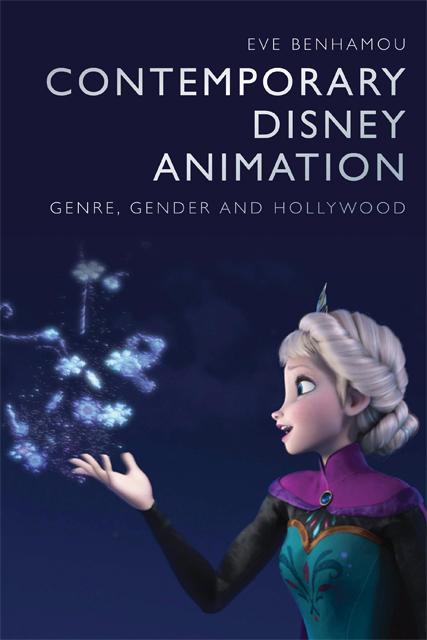Introduction
Published online by Cambridge University Press: 14 July 2023
Summary
Oh, come on! Princesses and cartoon characters?! Barf! (Vanellope in the official trailer for Ralph Breaks the Internet: Wreck-It Ralph 2, Phil Johnston and Rich Moore, 2018)
The official trailer for Ralph Breaks the Internet, the sequel to Wreck-It Ralph (Rich Moore, 2012), showcases a strikingly self-reflexive, tongue-in-cheek, and slightly altered sequence from the computer-animated film. While videogame ‘bad guy’ Ralph (John C. Reilly) and his young kart-racing friend Vanellope (Sarah Silverman) travel through the Internet’s immersive worlds, the intrepid little girl is directed to ‘Oh My Disney’, the company’s fantargeted promotional website. Passing through the gates of the Magic Kingdom and catching sight of iconic characters, from Snow White and Rapunzel to Winnie the Pooh’s Eeyore, Vanellope is frustrated and annoyed: she had been promised adventure and excitement, not what she assumes to be the boringly predictable and childish home of ‘princesses and cartoon characters’. As a flying robotic figure rushes over her and offscreen, she realises her mistake. A computer-generated camera pan reveals an unexpectedly expansive space where a multitude of props and characters – the Death Star, Iron Man, the Luxo Lamp, Dumbo – float over and move through sections labelled ‘Star Wars’, ‘Marvel’, ‘Pixar’, which surround the central ‘Disney Animation’ area. Looking forward to venturing into these various worlds, Vanellope excitingly exclaims, ‘Cool!’ Like the computer-generated camera pan, this book unveils and explores the multifaceted interactions between the studio’s contemporary animated output, Disney’s live-action properties, and wider generic trends within mainstream animation and Hollywood cinema.
Throughout its history, the Disney studio has asserted and maintained its leadership over mainstream American animation through a delicate balance, continuously reinventing its output while preserving what has been perceived and promoted as a distinctive aesthetic, narrative style and overall brand. In the late 1990s and early 2000s, Disney faced important challenges, including internal corporate tensions and the novel competition from computer-animation studios, notably Pixar and DreamWorks, along with growing academic and popular criticisms regarding predictable plots and retrograde gender portrayals.
- Type
- Chapter
- Information
- Contemporary Disney AnimationGenre, Gender and Hollywood, pp. 1 - 21Publisher: Edinburgh University PressPrint publication year: 2022



